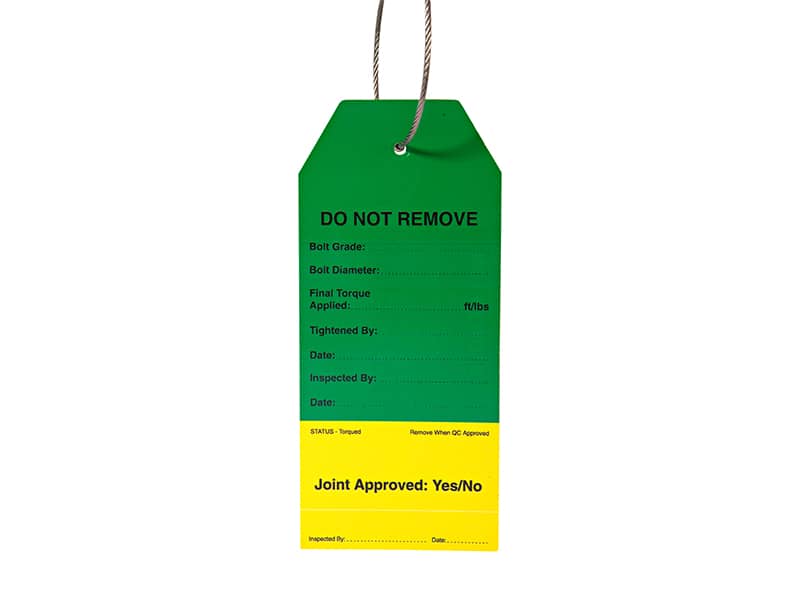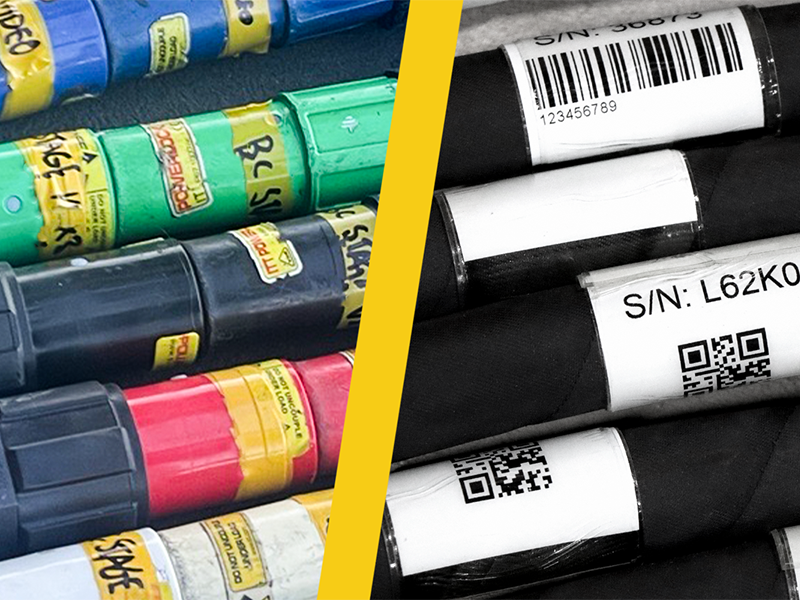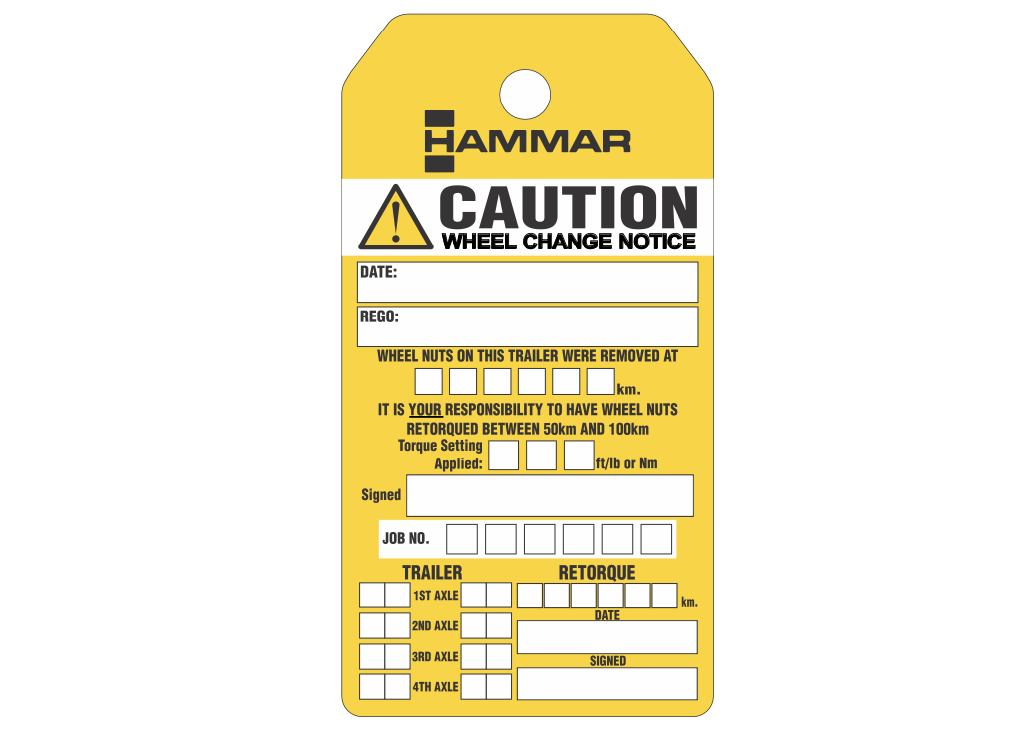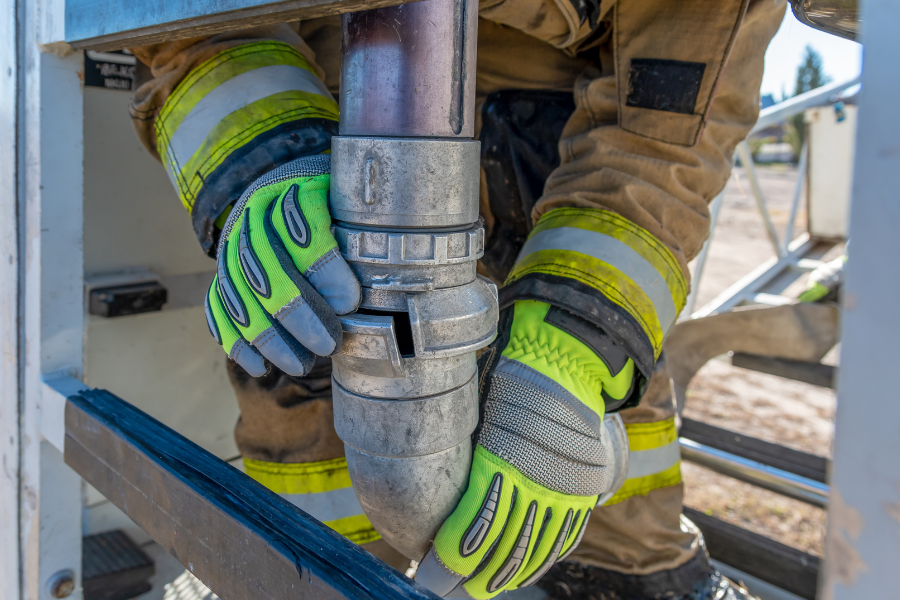
What Are Torque Tags and How Are They Used?
If you’ve ever worked with tools or machines that require proper torque application, you may have come across something called a torque tag. These small but essential tags provide valuable information about the proper amount of torque needed for a particular job or application, helping to ensure accuracy, safety, and reliability. In this article, we will explore the world of torque tags and their many uses, benefits, and applications.
Understanding Torque Tags
Definition of Torque Tags
Simply put, torque tags are small tags that provide information about the proper amount of torque needed to tighten or loosen a bolt or other fastener. They typically include information such as the required torque value, units of measurement, and any other relevant information that may affect the torque application process.
When it comes to tightening bolts and fasteners, it’s important to apply the right amount of torque. Too little torque can result in a loose connection that could potentially fail, while too much torque can damage the fastener or the materials being fastened. Torque tags help ensure that the proper amount of torque is applied, reducing the risk of failure or damage.
Components of a Torque Tag
Although the size, shape, and layout of torque tags may vary depending on the application, they typically include several key components. These may include the company or manufacturer name, the torque value and units of measurement, a part number or serial number, and any additional notes or warnings related to the application. Some torque tags may also include a barcode or other unique identifier for tracking or inventory purposes.
It’s important to pay attention to all of the information included on a torque tag. In addition to the torque value, the tag may also include information about the type of fastener being used, the material being fastened, and any other special considerations that may affect the torque application process.
Types of Torque Tags
There are two main types of torque tags: calibration and installation tags. Calibration tags are used to ensure that the tools or machines used for torque application are calibrated correctly and provide accurate readings. These tags may include information about when the tool was last calibrated and when it is due for calibration again.
Installation tags, on the other hand, are used to ensure that the proper amount of torque is applied to each individual bolt or fastener in a particular assembly or installation process. These tags may include information about the sequence in which the fasteners should be tightened, the torque value for each fastener, and any other special considerations for the installation process.
By using torque tags, manufacturers and technicians can ensure that the proper amount of torque is applied to each fastener, reducing the risk of failure or damage and ensuring that the final product meets the required specifications.
Applications of Torque Tags
Automotive Industry
The automotive industry is perhaps one of the most well-known applications of torque tags. Torque tags are used throughout the manufacturing and assembly process to ensure that each bolt and fastener is tightened to the correct torque specification. This helps to ensure the safety and reliability of the vehicles produced, as well as meeting the stringent safety standards required by regulatory bodies.
Additionally, torque tags are also used in the automotive industry for maintenance and repair purposes. When a vehicle is brought in for service, mechanics use torque tags to ensure that bolts and fasteners are tightened to the correct specification, preventing potential safety hazards and ensuring that the vehicle is operating at peak performance.
Manufacturing and Assembly
Many other industries also use torque tags in their manufacturing and assembly processes. For example, in the aerospace and aviation industry, torque tags are used to ensure proper assembly of critical components such as engines and landing gear. This is especially important in the aviation industry, where the safety and reliability of aircraft is of utmost importance.
In the construction and heavy machinery industry, torque tags are used to ensure the safety and reliability of large structures and equipment. For example, when constructing a skyscraper, torque tags are used to ensure that bolts and fasteners are tightened to the correct specification, preventing potential safety hazards and ensuring the stability of the building.
Torque tags are also used in the manufacturing of consumer goods such as appliances and electronics. By using torque tags during the assembly process, manufacturers can ensure that their products are safe and reliable for consumers to use.
Overall, the use of torque tags is crucial in a variety of industries to ensure the safety and reliability of products and equipment. Without torque tags, there is a risk of improper assembly or maintenance, which can lead to safety hazards and potential product failures.
How Torque Tags Work
When it comes to ensuring the reliability and safety of mechanical systems, torque tags are an essential tool. These small tags are used to document the proper torque values for individual bolts and fasteners, helping to ensure that each component is tightened to the correct specifications. But how exactly do torque tags work, and what makes them so important?
Measuring Torque
Before a torque tag can be applied, the proper amount of torque must be determined for each individual bolt or fastener. This is typically done through the use of a torque wrench or other specialised tool that can measure the amount of force applied to the bolt. It’s important to note that different bolts may require different torque values depending on their size, material, and other factors, so it’s essential to consult the manufacturer’s specifications or other relevant guidelines when determining the appropriate torque value.
Torque Tag Installation Process
Once the torque value has been determined, the torque tag can be installed on the bolt or fastener. This is typically done by placing the tag over the bolt and tightening it to the specified torque value. It’s important to ensure that the tag is securely fastened in place, as a loose or improperly installed tag could lead to inaccurate torque readings and potential safety hazards.
In some cases, torque tags may be pre-printed with the appropriate torque values for common bolt sizes and materials. These pre-printed tags can be a convenient option for workers who need to quickly and easily document torque values without having to manually calculate and record each value.
Reading and Interpreting Torque Tags
Reading and interpreting torque tags is a simple process. Each tag will typically include the required torque value, units of measurement, and any other relevant information that may affect the torque application process. Some tags may also include a unique identifier or other tracking information that can be used to help track and manage maintenance and repair activities.
By referencing the torque tag, workers can ensure that the proper amount of torque is applied to each individual bolt or fastener, helping to ensure accuracy, safety, and reliability. Torque tags can also be a useful tool for documenting maintenance and repair activities, as they provide a clear record of the torque values used during each service event.
In conclusion, torque tags are a simple but essential tool for anyone involved in mechanical maintenance and repair activities. By ensuring that each bolt and fastener is tightened to the appropriate torque value, workers can help to ensure the safety, reliability, and longevity of mechanical systems.
Benefits of Using Torque Tags
When it comes to industrial machinery, structures, and components, proper torque application is essential for ensuring safety, reliability, and longevity. Torque tags are a powerful tool that can help workers to achieve the correct torque application, providing a range of benefits that can improve performance and reduce maintenance costs over the long run.
Ensuring Proper Torque Application
One of the primary benefits of using torque tags is that they help to ensure proper torque application. By applying the correct amount of torque to each bolt or fastener, workers can ensure that machinery, structures, and other components are safe and reliable. Torque tags provide a clear indication of the correct torque specification, making it easy for workers to achieve the desired level of torque.
Proper torque application is particularly important in industries such as aerospace, automotive, and construction, where even small deviations from the correct torque specification can have significant consequences. Torque tags can help to ensure that workers achieve the correct torque application every time, reducing the risk of accidents, failures, and other issues.
Preventing Over-tightening and Under-tightening
Over-tightening and under-tightening can be a significant problem when working with bolts and fasteners. Over-tightening can lead to damage or failure, while under-tightening can lead to loosening or detachment. By using torque tags, workers can ensure that each bolt is tightened to the correct torque specification, helping to prevent these issues.
Over-tightening can be particularly problematic in industries such as automotive and aerospace, where excessive torque can lead to stripped threads, cracked components, and other forms of damage. Under-tightening, on the other hand, can be a significant problem in industries such as construction and manufacturing, where loose bolts and fasteners can compromise the safety and reliability of machinery and structures. Torque tags can help to prevent both of these issues, ensuring that workers achieve the correct torque specification every time.
Reducing Maintenance Costs
Proper torque application can also help to reduce maintenance costs over the long run. By ensuring that bolts and fasteners are tightened correctly, workers can help to prevent premature wear and tear, reducing the need for costly repairs or replacements. In addition, proper torque application can help to prevent damage to other components, such as gaskets and seals, which can also contribute to maintenance costs over time.
By using torque tags, workers can achieve the correct torque specification every time, reducing the risk of damage and wear and tear. This can help to extend the lifespan of machinery and structures, reducing the need for costly repairs or replacements over the long run.
Enhancing Safety and Reliability
Perhaps most importantly, the use of torque tags can help to enhance safety and reliability in a variety of industries. By ensuring that each bolt and fastener is tightened to the correct torque specification, workers can help to prevent accidents, failures, and other issues that can compromise safety and reliability.
In industries such as aerospace and automotive, where safety is paramount, proper torque application is essential for ensuring the safe and reliable operation of machinery and components. Torque tags can help to ensure that workers achieve the correct torque specification every time, reducing the risk of accidents and other safety-related issues.
Overall, the use of torque tags is a simple but effective way to improve performance, reduce maintenance costs, and enhance safety and reliability in a range of industries. By providing a clear indication of the correct torque specification, torque tags can help workers to achieve the correct torque application every time, ensuring the safe and reliable operation of machinery and structures.
Why torque tags?
Torque tags may seem like a small and simple component, but they play an essential role in ensuring accurate, safe, and reliable torque application. Whether you work in the automotive industry, aerospace, construction, or elsewhere, torque tags can help to make your work easier, more efficient, and more effective. So next time you tighten a bolt or fastener, remember the importance of torque tags and how they can benefit you and your work.
Questions about the article? We are here to help!
Our team are experts in choosing suitable labelling and tagging options for your specific application and environment. We are happy to advise and recommend the most efficient and cost-effective solutions for your workplace.








